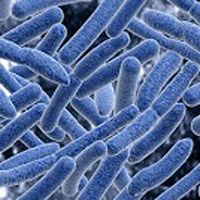Article
Spike in Shigella Infections Emerges in Missouri
Author(s):
As health officials take control of a Legionnaires' disease outbreak that has appeared in multiple cities throughout the US, which started in New York City, another potentially deadly bacteria has popped up on the radar.

As health officials take control of a Legionnaires’ disease outbreak that has appeared in multiple cities throughout the US, which started in New York City, another potentially deadly bacteria has popped up on the radar.
Shigellosis, an infectious disease caused by Shigella bacteria, has been making its way through Kansas City, Missouri. There are usually only 10 cases each year in Kansas City, however, the city’s health department has had to investigate more than 143 cases since January 1, 2015.
“It only takes a few bacteria, sometimes as little as 10 organisms to infect someone,” Tiffany Wilkinson, Acting Communicable Disease Prevention Division Manager, said in a statement.
There are four species of Shigella, including sonnei, flexneri, dysenteriae, and boydii — the first being the most common in the US. It’s transmitted through direct or indirect fecal-oral contact with an infected patient. Common symptoms include diarrhea, fever, and stomach cramps, but some patients do not show any symptoms despite the fact that they can transmit the disease. While the bacteria usually clears up in five to seven days, the illness can persevere into more serious complications.
- Seizures: Have occasionally been reported but usually resolve without treatment
- Post-infectious arthritis: Occurs in about 2% of patients
- Blood stream infections: Most common in patients who also have a weakened immune system, due to HIV or other illnesses
- Hemolytic-uremic syndrome (HUS): When the bacteria makes its way into the digestive system and kills red blood cells
In this most recent Kansas City outbreak, the majority of cases were found in daycares and elementary schools, which correlates with who the CDC says are the most at-risk.
- Children: The group most likely to catch the bacteria because of the contagious school setting
- Patients with HIV: The compromised immune system can lead to life-threatening blood infections
- Travelers: Trips to developing countries can increase the risk of being infected
- Gay, bisexual, and other men who have sex with men: Pattern observed in the US, Canada, Europe, and Japan
It seems like far too often does new evidence emerge showing that another bacteria strain is gaining resistance against antibiotics. The topic has not fallen on deaf ears, fortunately, as the World Health Organization (WHO) has addressed the battle and new technology continues to be in development. However, Shigella has shown signs of resistance.
“What is also concerning is that that we are seeing three different strains that are resistant to certain antibiotics,” Wilkinson verified, although further clarification wasn’t provided. There is no vaccine for shigellosis, but washing your hands (especially after caring for a child wearing a diaper) is an important piece of prevention.
For more information on Shigella, visit the CDC website.




